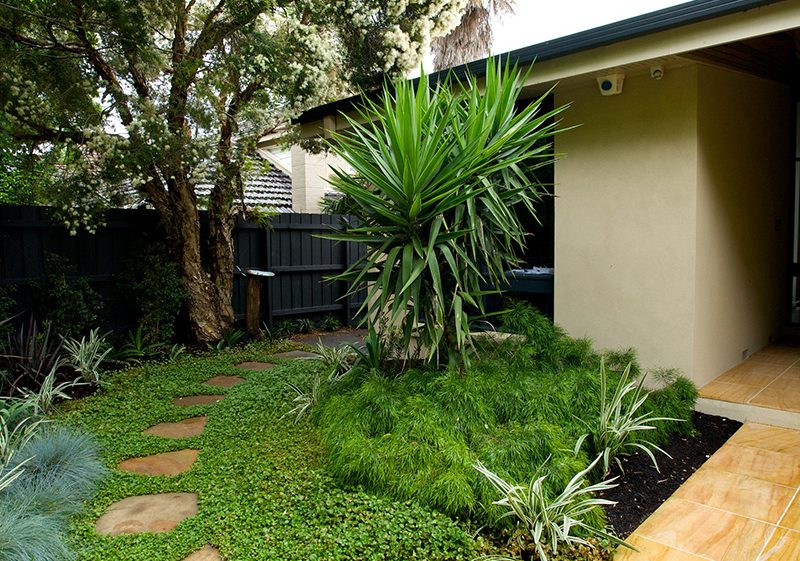 Desired Landscapes
Desired Landscapes
 Desired Landscapes
Desired Landscapes

Whether a path is being considered as a part of a whole new garden, or whether you see one little opportunity to add a path to an existing garden, I share with you, my considerations for the purpose of a garden path, and my little rule book.
Only build a path where people are naturally going to walk. Normally, this is in a straight line, or in a wide sweeping curve. There needs to be a reason to walk the path – i.e. to the car, or to a point of interest, (example would be a seat), within the garden. People naturally cut across awkward corners, or not bother to use a path that does not lead to a useful place.
 What surface is required for the anticipated traffic?
What surface is required for the anticipated traffic?Be practical about the amount of foot traffic expected on the surface. If the path will be used daily, to move shopping, prams or children’s equipment, the most sensible choice might be a solid paving or concrete. If it is a minor path to a small garden seat, stepping stones in gravel, or a decked surface might serve a more aesthetic purpose.

The width of this path was guided by the entry pillars, and provided a suitable entry width to this residence.
Refer to your existing surfaces, or other material decisions to make this decision. A path isn’t a highlight within a garden. It should look as though it is meant to be, and integrated into other decisions. If you already have a main, solid, paved path, a minor path could be the same paver material, set in gravel, lawn, or a groundcover. Natural bluestone paving, or steppers can look great in many situations.

This pedestrian entry path will not be used on a daily basis, and the driveway will be the main access for vehicles and bicycles. A bluestone stepping stone pedestrian path through lawn was a soft touch to this 1950’s weatherboard.
The proportion of the path in relation to other paths, and to the scale of your residence is important. Within a formal garden or larger residence, it might make sense for your main path, from front gate to front door to be significantly wide (i.e. 1.4m wide, or larger). In a small house with a cottage garden, a wide, solid path from front fence to front door could easily look too barren. A 1m wide path might be correct for a minor pedestrian path. A minimum 1.2m wide path would probably be required for a pathway that might haul children’s bikes and prams. There is a balance between the practical purpose of the path and the message that this path sends to people. Do you want to communicate “Welcome to my grand abode” or ’ vs. ‘there’s the quaint little path to the garden seat’)

A wide, solid sandstone paver to the front door provides practical purpose whilst a complementary natural sandstone stepper pathway provides a minor path.
There are many times and places where a simple, inexpensive gravel path is the right choice. They can be perfect for creating a minor path, or adding to a country atmosphere. Be mindful however that over time, they may require further compaction, top dressing and not respond well to heavy downpours. Similarly, groundcovers grown between pavers can be a softer addition to a path but require irrigation and maintenance. Exposed concrete and solid paving might be the more expensive option at the outset, but built correctly, they become a set and forget asset to your property. Again, there is not a right decision but another consideration in the many thoughts that arise when you make a decision to add a path within your garden.

Stepping stone pathways, where appropriate, are often an inexpensive choice. Some maintenance, weeding and water supply is required to keep groundcovers (dichondra repens) growing well between these steppers.

Another stepping stone example for a minor path (recycled sleepers). The mulched finish between these pavers may be suitable for a minor path, but if used regularly, mulch may tread from foot to other pathways.
This article considers my personal preferences for pathways. I have developed these ideas from my design courses, work experiences, and review and follow up of different projects. I have not touched upon some feng-shui principles of a garden and pathways, which I also know to be important for some people.